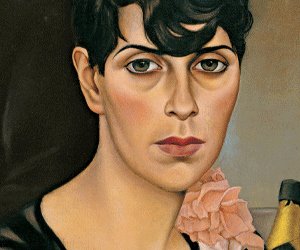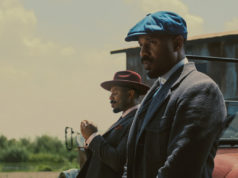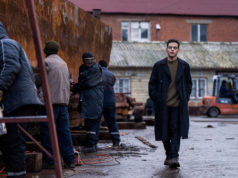The original Candyman isn’t a good movie, but you can easily see why it struck a chord back in 1992. Before horror films made for Black audiences enjoyed any traction in the wider culture, the hook-handed, undead monster of that horror film was an effective stand-in for the dangers of the African-American hood: If you hang out with the wrong people or stay out too late, the Candyman will get you. Shame that that first film hopelessly jumbled its metaphors so. The new Candyman — a sequel, not a remake — invents a whole raft of new metaphors and weaves them into a far headier nightmare for the ’20s.
The main story takes place in Chicago in 2019, when creatively blocked artist Anthony McCoy (Yahya Abdul-Mateen II) and his curator girlfriend Brianna (Teyonah Parris) hear a scary story from her gay brother Troy (Nathan Stewart-Jarrett). He tells of a white graduate student in the ’90s who snapped and tried to sacrifice a Black baby in the housing project that then stood on Cabrini Green. Troy doesn’t mention Candyman, but Anthony finds out about the urban legend anyway. Soon, Anthony can’t stop making Candyman-inspired art, from a series of Francis Bacon-like portraits to a mirrored installation that dares people to say Candyman’s name. People do, and promptly get hacked to death. Anthony keeps working.
I love the script, which is co-written by Jordan Peele and dense with ideas. There is some expert skewering of the academic jargon that pretentious artists frequently use. Against that backdrop comes some wonderfully pointed lines about race relations, as when Brianna describes gentrification: “White people built the ghetto, then tore it down when they realized they built the ghetto.” Anthony hurls a poisonous barb at a lecherous gallerist: “Why don’t you stock up on morning-after pills to accommodate your interns?” A former Cabrini Green resident (Colman Domingo) reaches a haunting conclusion when he says that the Candyman legend is how the Black community copes with the repeated trauma of police killings. Chillingly, the murders around Anthony’s art make him and Brianna objects of fascination in the art world, and not just among its white people. Even more troubling is the way Anthony eats up the attention — he’s jubilant when a TV news report informing him of two friends’ violent deaths happens to mention his name. The way this movie’s story ties into the original’s is a delightful surprise, too.
Director Nia DaCosta, who co-wrote the script as well, delivers a visual sophistication that the original movie lacked. Mirrored surfaces are everywhere, particularly in an elevator where Anthony sees the killer. Candyman’s initial murders take place in the flickering light of a video art installation, and past events are retold in the form of shadow puppet theater scenes. This lushness contrasts with the gangrenous deterioration of Anthony’s right hand after he’s stung by one of Candyman’s bees, which DaCosta follows in gruesome detail as it gradually infests more of his body. This filmmaker, whose one previous feature was the eye-catching thriller Little Woods, shows no strain working with a bigger budget in a different genre. At times her visuals attain the phantasmagoric power of Dario Argento’s operatic horror flicks.
The actors rise to the level of everything else. Domingo, whom I previously cited as a calming presence in movies, here comes unraveled in spectacular fashion. Vanessa Williams (reprising her role from the original film and looking remarkably unchanged three decades later) gives a rending speech recounting the events she witnessed back in ’92. Even so, no one tops Abdul-Mateen, who played supporting parts in Us and Aquaman. This is the first film to showcase him, and he seizes his chance whether his character is feuding pettily with fellow artists, growing possessed by his work and screaming at his paintings, or breaking down as Anthony tells Brianna that he has resurrected a monster. This is a horror-movie performance to rival Daniel Kaluuya’s in Get Out.
In fact, the whole film merits that comparison, which is high praise. Where Get Out ends with one Black man fighting for himself, this movie ends with our surviving characters turning this monster who was born out of white brutality against the present-day agents of that brutality. The movie ends with the original Candyman himself (Tony Todd) appearing to disinter buried history with the last line: “Tell everyone.” It’s because everything before has been built up so skillfully that this conclusion lands with such power.
Candyman
Starring Yahya Abdul-Mateen II and Teyonah Parris. Directed by Nia DaCosta. Written by Jordan Peele, Win Rosenfeld, and Nia DaCosta. Rated R.












